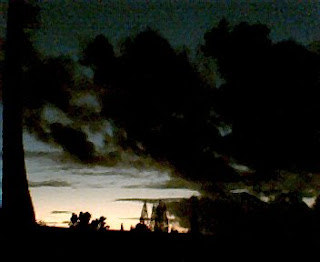Note to self #2: the night after taking over 130 pictures, remember to recharge the camera's battery. We had just enough juice for another thirty pictures or so.
The next day in Takayama City dawned with another rainstorm and a rather damp trip to the farmer's market.

The next stop was a traditional gassho-style house, the Toyama family's farmhouse.

No hardware is used in the construction of the house. Instead, they join all the beams and other parts using carefully cut joints and wooden wedges and use rope in certain other areas. The steeply-sloped roof handles the two meters (six feet) of snow the area sometimes receives. The house has a straw-thatched roof that must be replaced every forty years or so.
After touring this large farmhouse, we went to Shirakawa village, a historically-preserved village full of this style of house.


The next stop was Gokayama, the heart of the paper-making industry, where they've been making mulberry-bark paper for three hundred years or so. We got a chance to try our hands at making paper (just the easy part of turning pulp into paper, not the hard part of preparing the bark and making the pulp.) Unfortunately, that's about the time the camera ran out of juice. They mentioned that paper-making is a dying art and they're trying to find new uses for washi paper, which has me thinking about structural applications. (Hey, if they can make paper sculptures, wallets, and purses, it may also be strong enough for some very interesting structural uses.)















































